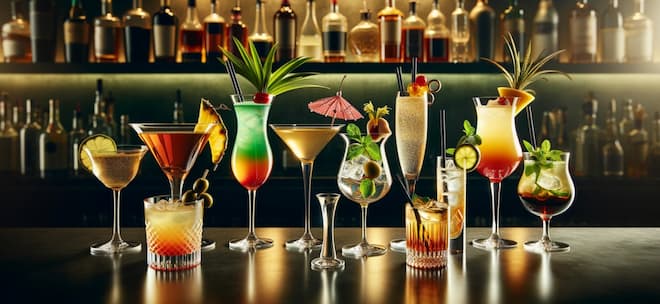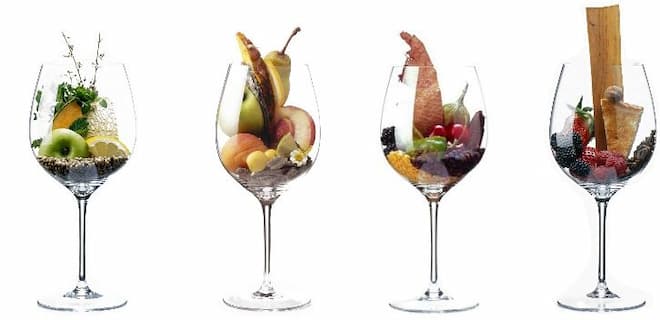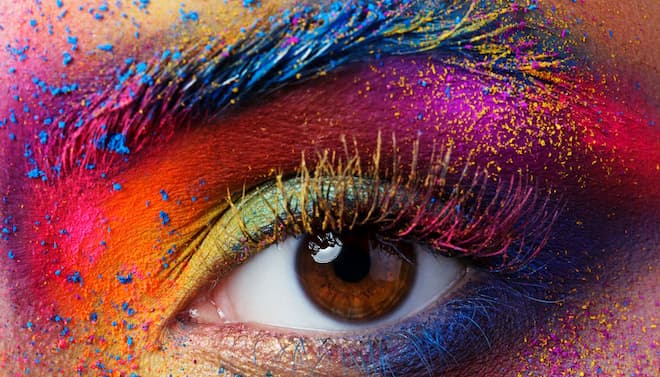
19 June, 2024
Mixology Diary: Mastering the Art of Mixology and Glassware
Welcome to our Mixology blog, your go-to spot for all things cocktail and glassware! Whether you’re a budding mixologist or a seasoned pro, understanding the right glassware is just as important as nailing the perfect cocktail recipe. Let’s shake and stir our way through the dazzling world of mixology and explore the glassware that elevates each drink.
The Art of Mixology and Its Glassware Companions
Mixology isn't just about mixing drinks; it's an art form that combines flavour, presentation, and style. The right glassware not only enhances the visual appeal but also the overall drinking experience. Here are ten classic pieces of glassware every mixologist should know, from highball glasses to custom shot glasses:
1. Highball Glass
- Design and Capacity: The highball glass is typically tall and cylindrical, with a capacity ranging from 8 to 12 ounces. Its straight sides maintain the carbonation and blending of the drink.
- Ideal For: This glass is not just limited to a Gin and Tonic. It's also perfect for cocktails like the Mojito, Tom Collins, or any drink that benefits from a higher ratio of mixer to alcohol.
- Presentation Tip: Garnishes like a lemon twist, lime wedge, or a sprig of mint can enhance both the flavour and appearance in a highball glass.
2. Lowball Glass (Old Fashioned Glass)
- Design and Capacity: The lowball glass, also known as a rocks glass, is short and stout with a wide brim, usually holding about 6 to 8 ounces. The wide brim allows for the aroma of the drink to be appreciated.
- Ideal For: Beyond the Old Fashioned, this glass is great for drinks like the Whiskey Sour, Sazerac, or any spirit-forward cocktail served neat or with ice.
- Presentation Tip: The wide opening of the glass is ideal for muddling ingredients directly in it and for adding a large ice cube or sphere that melts slowly.
3. Martini Glass
- Design and Capacity: The martini glass is known for its distinctive V-shape, typically holding around 5 to 10 ounces. The stem prevents the hand from warming the drink, keeping it cool.
- Ideal For: While synonymous with the Martini, this glass is also used for drinks like the Cosmopolitan, Manhattan, or any other cocktail served without ice.
- Presentation Tip: The wide rim provides ample space for creative garnishes like olives, lemon twists, or even a decorative rim (like sugar or salt).
4. Margarita Glass
- Design and Capacity: The margarita glass often features a broad-rimmed, double-shaped bowl designed to showcase the vibrant colours of the drink and hold a large volume, typically around 12 ounces.
- Ideal For: Primarily used for Margaritas, this glass is also suitable for other frozen or blended cocktails like Daiquiris or Pina Coladas.
- Presentation Tip: The wide rim is perfect for a salt or sugar rim and garnishes like lime wheels or wedges, adding an extra visual and flavorful punch to the drink.

5. Coupe Glass
- Design and Capacity: The coupe glass boasts a wide, shallow bowl with a stem, typically holding about 6 to 8 ounces. Its design dates back to the early 20th century and was originally used for champagne.
- Ideal For: Apart from the classic Daiquiri, it’s perfect for cocktails like the Sidecar, Manhattan, or any sophisticated, pre-Prohibition era cocktail. Its wide bowl is excellent for showcasing the colour and clarity of the drink.
- Presentation Tip: The coupe's elegant stem allows for a sophisticated hold, and its broad rim is ideal for garnishes like citrus twists or edible flowers.
6. Flute Glass
Design and Capacity: The flute glass is known for its tall, narrow shape, holding about 6 to 10 ounces. This design reduces the surface area at the top, reducing the rate of carbonation loss.
- Ideal For: Traditionally used for champagne, it’s also great for sparkling wine cocktails like the Bellini, Mimosa, or any drink where preserving the effervescence is key.
- Presentation Tip: The flute's elongated shape enhances the visual of bubbles rising to the top, making it perfect for toasts and celebratory moments.
7. Hurricane Glass
- Design and Capacity: The hurricane glass, named after the hurricane lamp it resembles, is tall, curvaceous, and festive, usually holding around 15 to 20 ounces.
- Ideal For: It’s the go-to glass for tropical, fruity, and ice-blended drinks like the Pina Colada, Hurricane, or Mai Tai. Its large size accommodates plenty of ice and garnishes.
- Presentation Tip: The glass's fun and playful shape is perfect for elaborate garnishes like fruit slices, umbrellas, and straws, adding to the tropical vibe.
8. Snifter Glass
Design and Capacity: The snifter glass features a short stem and a wide bottom with a relatively narrow top, typically holding about 6 to 8 ounces. The wide bowl allows for swirling without spilling.
- Ideal For: Though commonly associated with brandy and cognac, it’s also excellent for aromatic cocktails like the Brandy Alexander or any drink where the focus is on savouring the aroma.
- Presentation Tip: The design of the snifter traps the aromas inside the glass, enhancing the olfactory experience of the drink. It’s best held by the bowl to gently warm the contents, releasing more aroma.
9. Shot Glass
- Design and Capacity: The shot glass is a small, sturdy glass designed for about 1 to 1.5 ounces of liquid. Its straightforward design is perfect for quick, direct consumption of spirits.
- Ideal For: While the Tequila Shot is a classic, this glass is versatile for a wide range of neat spirits (like whiskey or vodka) or creatively layered shooters like the B-52 or Kamikaze.
- Presentation Tip: The simplicity of the shot glass lends itself to creative layering of colours and textures in shooters. For neat spirits, it offers a no-frills, direct approach, focusing on the spirit itself.
10. Irish Coffee Glass
- Design and Capacity: Typically, an Irish coffee glass is a stemmed glass with a handle, holding about 8 to 10 ounces. The stem prevents heat from transferring to the hand, while the clear glass showcases the layers of the drink.
- Ideal For: Primarily used for Irish Coffee, this glass is also excellent for other hot cocktails or layered liqueur-based coffees, such as Spanish Coffee or a Hot Toddy.
- Presentation Tip: The transparency of the glass beautifully displays the distinct layers of cream and coffee. A handle ensures it’s comfortable to hold when filled with hot liquids, and the stem keeps the heat away from the hand.
Why Glassware Matters in Mixology

In the world of mixology, the choice of glassware is as crucial as the ingredients that go into the drink. Each glass serves a specific function, enhancing the overall experience of the cocktail in terms of aroma, flavour, temperature, and texture.
1. Aroma and Flavour
- Concentration of Aromas: Glasses like the snifter are ingeniously designed with a wide bowl and a narrow top. This shape serves to trap and concentrate the aromas of the drink. When you bring the glass to your nose, you’re greeted with a bouquet of scents, enhancing the anticipation of the first sip.
- Enhancing Flavour Profile: The concentrated aromas greatly influence our perception of taste. As most of what we taste is actually what we smell, glasses enhance the aroma of a drink, in turn, enhance its flavour. For example, a brandy snifter amplifies the rich, complex aromas of brandy, making the tasting experience more layered and enjoyable.
- Design for Specific Drinks: Different drinks have varying aromatic profiles. A martini glass, with its wide brim and open bowl, allows the subtler aromas of a martini to be appreciated without overpowering the senses.
2. Temperature and Texture
- Preserving Carbonation and Temperature: The flute glass, with its long, narrow design, is not just for aesthetics. It helps maintain the carbonation of champagne or sparkling wines, as the reduced surface area at the glass's top slows down the bubbles' escape. This design keeps the drink bubbly and lively for longer.
- Enhancing the Drinking Experience: The texture of a drink is part of its appeal. A flute's design not only preserves carbonation but also creates a pleasant texture as the bubbles tingle on the tongue. This enhances the overall sensory experience of enjoying a sparkling beverage.
- Retaining Heat: For warm drinks, the Irish coffee glass with its stem and handle design serves a dual purpose. The stem allows you to hold the glass without burning your fingers, while the clear glass showcases the appealing layers of the drink. The design ensures the beverage remains warm, allowing you to savour each sip at the ideal temperature.
Visual Appeal

The visual appeal of a cocktail is a critical element in the overall drinking experience, and glassware plays a pivotal role in enhancing this aspect. A drink's presentation can set the tone for its enjoyment even before the first sip is taken.
1. Enhancing the Aesthetic of the Drink
- Complementing the Cocktail's Characteristics: Different cocktails have unique visual characteristics, and the right glassware can accentuate these. For example, the vibrant colours of a layered cocktail are beautifully displayed in a clear, tall glass, while the sophisticated simplicity of a classic martini is underscored in an elegant martini glass.
- Shape and Colour Contrast: The shape of the glass can create an appealing contrast with the drink. A curvy hurricane glass adds a fun and exotic look to tropical drinks, while the straight lines of a highball glass provide a sleek appearance to more simplistic mixed drinks.
2. Creating an Immersive Experience
- Thematic Presentation: Glassware can also contribute to the thematic presentation of a cocktail. For instance, a tiki-themed drink might be served in a quirky tiki mug, enhancing the thematic experience of enjoying the drink.
- Garnish and Glass Synergy: The design of the glass can influence the type of garnish used, further enhancing the visual appeal. A wide-brimmed glass like the margarita glass not only accommodates a salt rim but also provides ample space for decorative garnishes like lime wheels or tropical flowers.
3. Influencing Perception and Expectation
- First Impressions: The first visual impression of a cocktail can influence expectations and perceptions. A beautifully presented cocktail in the appropriate glassware can heighten anticipation and enhance the overall enjoyment of the drink.
- Reflecting Quality and Craftsmanship: A cocktail served in the right glassware reflects the quality and craftsmanship of the drink. It shows attention to detail and care in presentation, which can enhance the perceived value and experience of the cocktail.
Mixology Tips for Beginners

Embarking on the journey of mixology can be both exciting and a bit daunting. However, with a few essential tips and a focus on the basics, even beginners can quickly start crafting delightful cocktails. Here are some expanded tips for those just starting out in the world of cocktail making.
1. Start with the Basics
- Master Classic Recipes: Begin by learning to make a few classic cocktails. This could include a Margarita, Martini, Old Fashioned, or a Mojito. These foundational drinks teach you the basic techniques of mixing, shaking, and stirring.
- Understand the Ingredients: Get familiar with the core ingredients – spirits, mixers, and garnishes. Knowing how each ingredient influences the flavour of a cocktail is key.
- Glassware Knowledge: Familiarise yourself with the glassware associated with each type of cocktail. Understanding why a Martini is served in a Martini glass and an Old Fashioned in a lowball glass is part of learning the craft.
2. Quality over Quantity in Glassware
- Invest in Versatile Glassware: You don’t need an extensive collection to start. A set each of highball glasses, lowball glasses, and stemware (like Martini or Coupe glasses) is a great beginning. These can cover a wide range of cocktails.
- Durability and Style: Look for glassware that not only looks elegant but is also durable. Crystal glasses, for example, offer clarity and a certain aesthetic appeal but can be fragile.
- Proper Care: Learn to care for your glassware. Proper cleaning and storage will keep your glasses in good shape and ready for your next cocktail creation.
3. Presentation is Key
- Garnishing Techniques: Learn the basics of garnishing. This could be as simple as a lemon twist, a sprig of mint, or a salt rim. Each garnish should complement the drink both in terms of flavour and appearance.
- Creative Presentation: Don’t be afraid to get creative. Use colourful straws, decorative picks, or even edible flowers to add a personal touch to your cocktails.
- Balance and Proportion: Remember that garnishes should enhance, not overpower the drink. The size and quantity of garnish should be in proportion to the glass and the cocktail itself.
For beginners in mixology, starting with a solid foundation in the basics of cocktail recipes, glassware, and presentation can set the stage for more advanced techniques. By focusing on quality over quantity, especially in terms of ingredients and glassware, and paying attention to the art of presentation, new mixologists can elevate their creations from simple drinks to memorable cocktail experiences. Remember, the journey into mixology is a continuous learning process, one that is as enjoyable as it is rewarding.
Conclusion
Understanding the synergy between the cocktail and its glassware is essential in the world of mixology. Each glass has its story and character, much like the drinks they hold. So, the next time you’re mixing up a drink, pay homage to the art of mixology by choosing the perfect glass. Cheers to the wonderful world of cocktails and their glassware companions!
The Glassware Only Team



